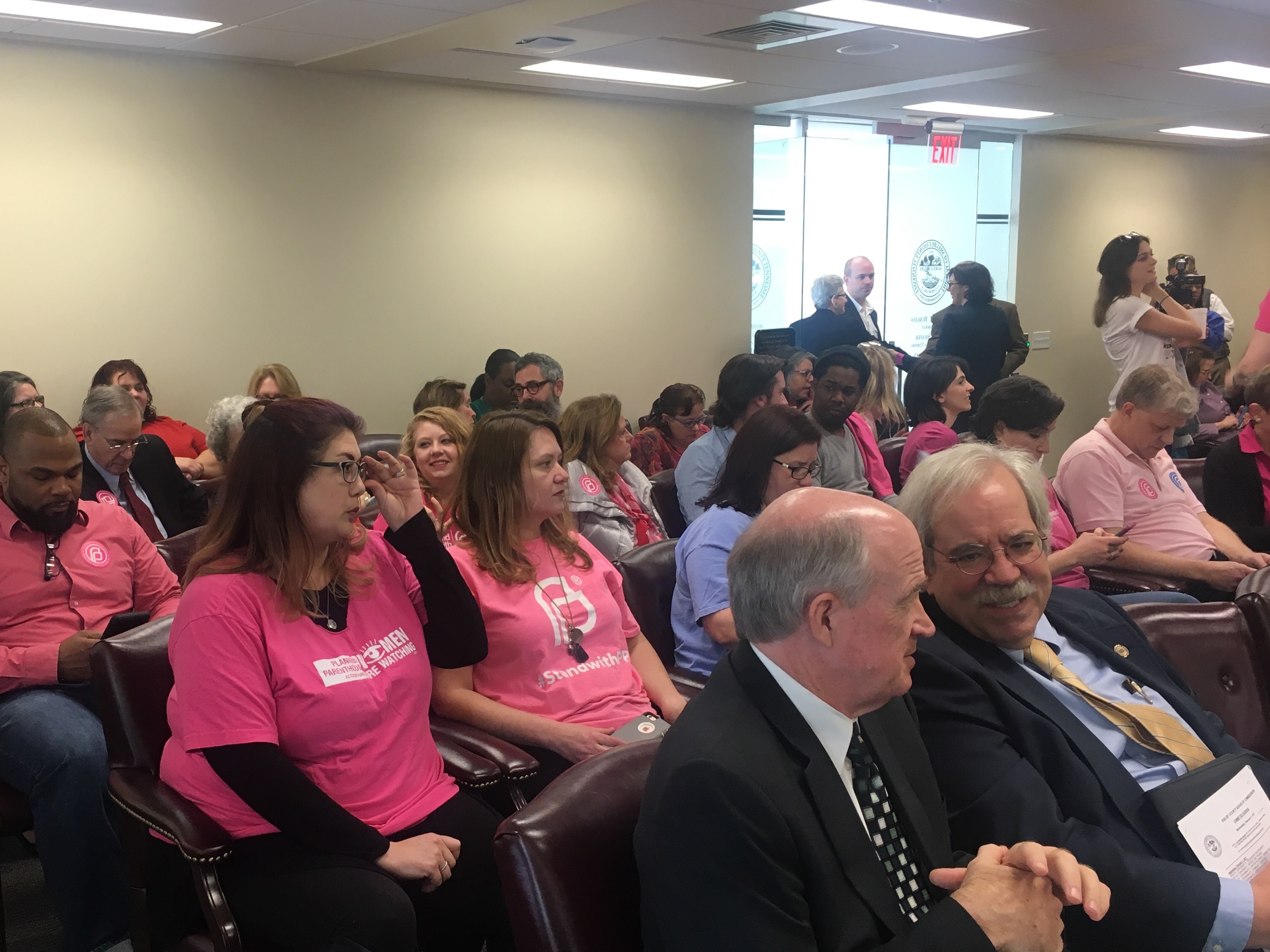 JB
JB
Mayor Jim Strickland previews possible de-annexation plan for Shelby County legislators, as state Rep. Ron Lollar, delegation chair, listens.
NASHVILLE — On Wednesday, one day before the scheduled unveiling in Memphis of a tentative de-annexation plan, Memphis Mayor Jim Strickland addressed a luncheon of the Shelby County legislative delegation and gave its members, several of them openly apprehensive, some hints about what might be in the package.
Pending Thursday afternoon’s meeting of the city-county Strategic Footprint Review Task Force, the city-county body formed last year to examine de-annexation perspectives, Strickland kept the specifics to himself but suggested some of the plan’s contours.
After lengthy examination of the issue with the aid of consultants, Strickland said, the task force had settled on three main factors in determining which areas were most suitable for de-annexation from the city’s point of view: (1) “density,” with relatively unpopulated areas considered most eligible; (2) the degree of difficulty in providing services to a given area; and (3) the extent to which a neighborhood’s residents had been “longstanding” in their wish to be de-annexed.
The Mayor suggested that there were “six or seven areas” that matched up with those criteria to one degree or another. He said that the areas where the “loudest” demands for de-annexation had come from were Southwind and South Cordova, the city’s most recently annexed areas.
There were 340 square miles within the city limits of Memphis as currently constituted, said Strickland, with comparable figures for Boston and Chicago being 22 square miles and 210, respectively. Judicious trimming from de-annexation could “in the long run” be beneficial to Memphis, he argued, though he acknowledged that “there would be a short-term financial hit.”
Prompted by a question from state Representative Larry Miller, an inner-city Democrat and a member of the task force, Strickland agreed that any de-annexation legislation acceptable to Memphis should honor the principle of “local option” and be sponsored from within the county delegation and that hostile measures proposed by legislators outside Shelby County should be resisted.
As was well remembered by everyone at the meeting, which was held at the Tennessee Tower building near the Capitol, the de-annexation question had seemingly come out of nowhere a year ago, in the form of a sweeping measure co-sponsored by Rep. Mike Carter (R-Ooltewah) and Senator Bo Watson (R-Hixson).
The 2016 bill would have established a relatively low threshold for the de-annexation of any urban area annexed since 1998, the year of Public Law 1101, which had redefined annexation procedures in Tennessee. De-annexation would have been allowed upon the presentation of a petition signed by a tenth of an area’s population, followed by passage of a referendum by a simple majority.
The potential consequences to Memphis could have been enormous, with a possible population reduction of some 120,000 citizens and potential revenue losses, in property tax and local-option sales tax proceeds, of as much as $78 million annually. A massive resistance effort was quickly organized involving city and Chamber of Commerce officials, whose combined effort managed to get the bill referred back to committee and ultimately stalled, with the understanding, however, that the issue would be revisited this year.
That fact was what had brought Strickland and a contingent of other representatives of the city to Nashville this week. The Mayor said Wednesday that special counsel Alan Crone and city lobbyist Jay Bucy had met with Carter about the de-annexation matter, while he himself had scheduled a meeting with Watson.
Shelby County Mayor Mark Luttrell, who also met with the Shelby County legislative delegation, said he supported the city’s efforts to come up with an acceptable plan and that any de-annexation affecting Memphis would have an impact upon county government also, particularly with regard to the Sheriff’s Department.
Various legislators representing the county’s urban core gave vent to misgivings about the effects of de-annexation legislation. Memphis Democrat Joe Towns at one point expressed concern about damage to the Memphis “brand” and wondered about the possible open-ended nature of a de-annexation formula. “Where does it stop?” he asked, suggesting that, once such a process started, there would be “no end in sight.”
Noting that an acceptable de-annexation formula would take time to develop, Strickland sought to be reassuring. “Give us a few weeks, and we’ll show you how this will benefit Memphis. We’ll be better off trying to satisfy the inner city rather than all 340 square miles.”

 Micaela Watts
Micaela Watts 


